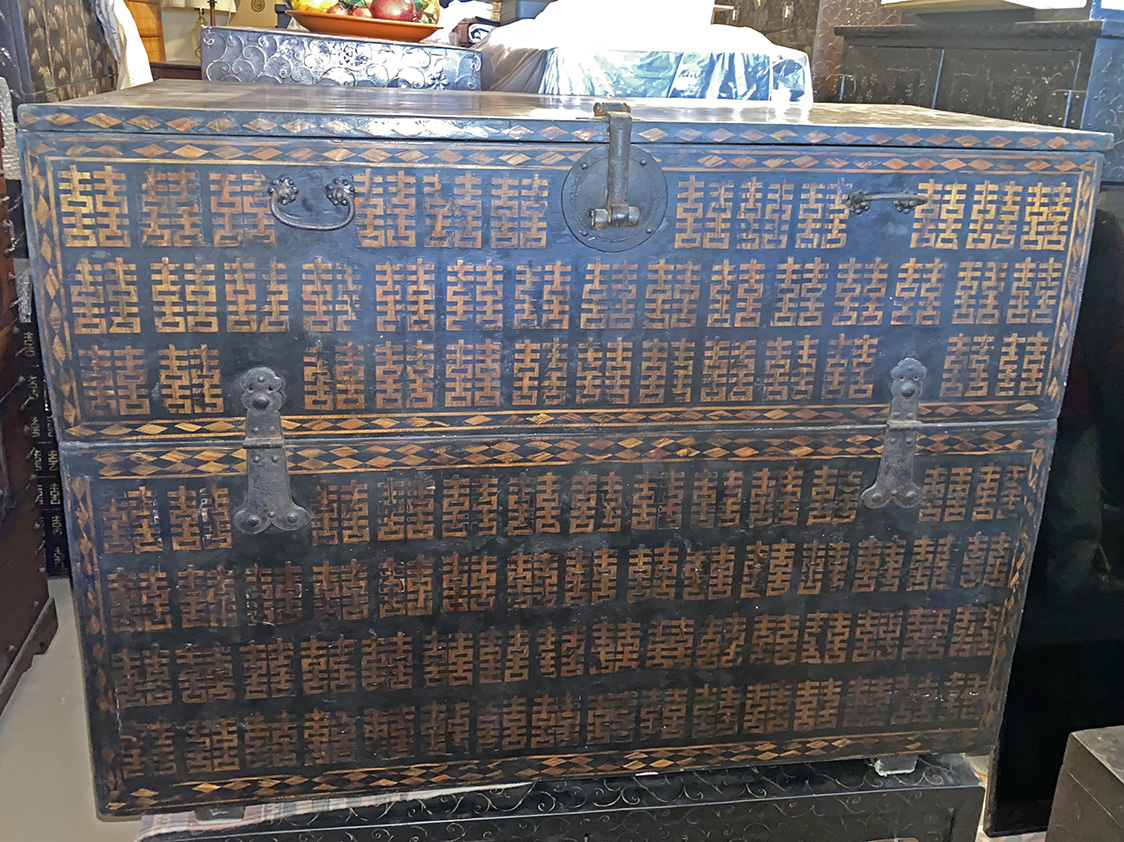
Circa 1860, Yi Dynasty; found on Kanghwa Island Black lacquer on wood, Chestnut and pear wood, iron fittings, oil finish H, 31″, L. 41″, D. 17.5″
The front of this chest is inlaid with the Chinese character “Double Happiness” in pearwood. Chinese characters were often used for high officials in that early period, as Yi court paid homage to China, and government officials had to be able to read and write in Chinese to stay in high status or hope to advance in government positions.
This blanket chest is certified to be made of chestnut wood, which could be Zelkova in Korea. Either way, the wood is highly prized in Korea for its density and durability. The top, middle, and bottom of the front panel has double rows of diamond-shaped inlaid designs beside the “Double Happiness” characters. This design signifies “abundant happiness and wealth” and is inlaid also all over the top panel and the sides of this chest. Inlaying is a very labor-intensive work, so the finished product is very expensive. This chest is in no doubt, a wedding present for an elite couple of society.
There are three small drawers inside at the top for the owner to keep small personal items and the rest of the space for storing seasonal clothing. The inside is lined with Chinese character paper, which doesn’t seem very old, so the worn lining must have been replaced. The metal fittings on the chest are all made of iron, in keeping with scholar/officials of that age who were adherents of Buddhism, favoring the humble iron for its purity and quiet strength. The chest sits on two boards to keep it off the characteristic “ondol” heated floor in Korean upper-class households.
This chest was found after the Japanese Occupation on Kanghwa Island, a prison colony for the Kingdom of Korea for two thousand years. It was recovered by an American missionary doctor who was invited by the government to go there to treat the sick and the dying. He was allowed to take away any furniture the exiled took there as the ruling scholar class did not value furniture. For his humanitarian work, the doctor was honored with Korean citizenship. He lived the rest of his life in Korea. The chest was later passed on to a Korean Professor of Korean History and Antiquity who certified this chest as an authentic antique and is quite rare.